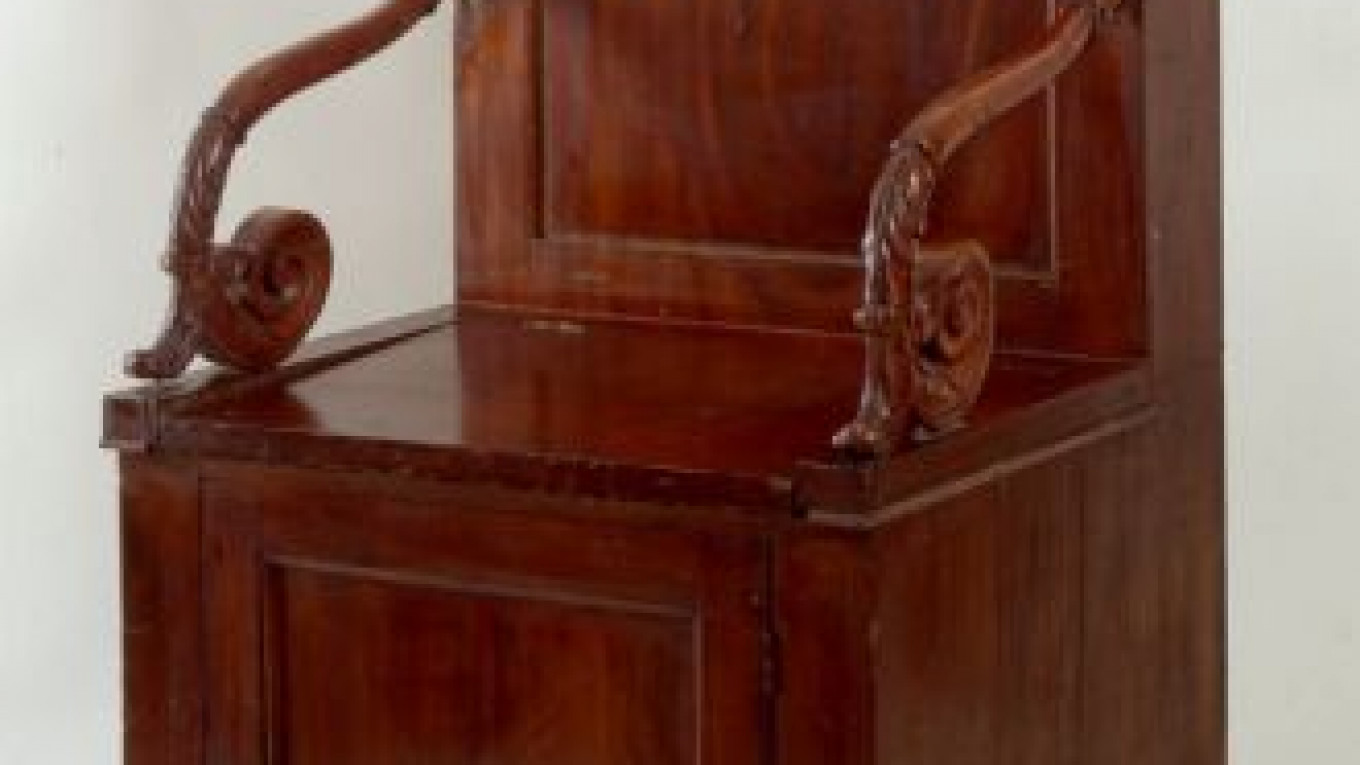Muscovites complained about the smell of burning peat that spread over the city in the summer, but there are far worse smells: What about the fragrance of a city before a sewage system was installed?
Before there were toilets and flushes, there were cesspools spread around the city, and as one German traveler noted at the end of the 19th century: “The only thing that improves the sanitary situation in the city, however sad this is, is fires.”
The Historical Museum’s latest exhibition, “Where the King Went by Foot — Hygiene in a Historical Context,” tells the tale of the toilet, sanitation and hygiene, and takes visitors on a journey from an Ancient Roman sewage system to an 18th-century English toilet table to cosmic pampers used by Soviet cosmonauts.
Visitors can trace the development of hygiene from the medieval window from which waste was thrown, to a collection of different water closets, basins on which the exhibit focuses in unerring, fascinating detail.
There is the “Water Dipper” — a bowl made out of German soldiers’ helmets during the Siege of Leningrad. With water pipelines destroyed, the city’s inhabitants had to use whatever was at hand to gather water and keep clean to maintain decent hygiene and avoid epidemics.
The museum has plucked exhibits from museums from all over the country, as well as from the museum of toilets in Kiev. The exhibit is sponsored by a hygiene-product manufacturer.
Moscow was relatively clean compared with other cities in Europe in the medieval ages, said the exhibit’s curator, Dmitry Pozakov, because of a spot of tsarist modernization when Tsar Peter the Great ordered anyone who threw feces out onto the street to be punished.
In place of the bowl being emptied out of the window came a group of men with the dirtiest job in town.
“There was a special group of people who served as city cleaners,” Pozakov said. “They were smart, strong, refrained from drinking and moved around with large carts and horses at night to empty the cesspools where people left their excrement. It was a dirty but well-paid job.” One rumor went that they were paid in gold coins.
Russia’s move toward a more hygienic way of getting rid of its waste was not that different from the rest of Europe, Pozakov said. Other parts of the country had their own peculiarities, though.
“In the Caucasus, a specially designed cradle for babies was often used to channel away feces through a piece of lamb bone down to a pot underneath,” Pozakov said.
The exhibit is heavily aimed at children, and the museum provides tours for schools during the day so they can learn about hygiene.
There they can learn from the advice that used to feature in Soviet posters: “Open your window every day for at least half an hour; clean the floor every day with hot water; do not make a mess around the toilet — clean up after yourself.”
“Where the King Went by Foot — Hygiene in a Historical Context” runs till Oct. 3. Historical Museum. 1/2 Red Square. Metro Ploshchad Revolyutsii. Tel. 692-4019, www.shm.ru.
A Message from The Moscow Times:
Dear readers,
We are facing unprecedented challenges. Russia's Prosecutor General's Office has designated The Moscow Times as an "undesirable" organization, criminalizing our work and putting our staff at risk of prosecution. This follows our earlier unjust labeling as a "foreign agent."
These actions are direct attempts to silence independent journalism in Russia. The authorities claim our work "discredits the decisions of the Russian leadership." We see things differently: we strive to provide accurate, unbiased reporting on Russia.
We, the journalists of The Moscow Times, refuse to be silenced. But to continue our work, we need your help.
Your support, no matter how small, makes a world of difference. If you can, please support us monthly starting from just $2. It's quick to set up, and every contribution makes a significant impact.
By supporting The Moscow Times, you're defending open, independent journalism in the face of repression. Thank you for standing with us.
Remind me later.






